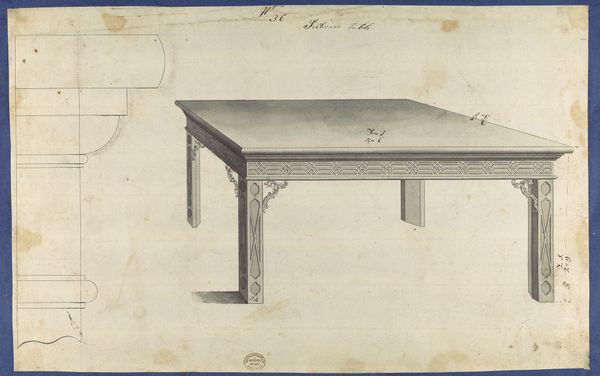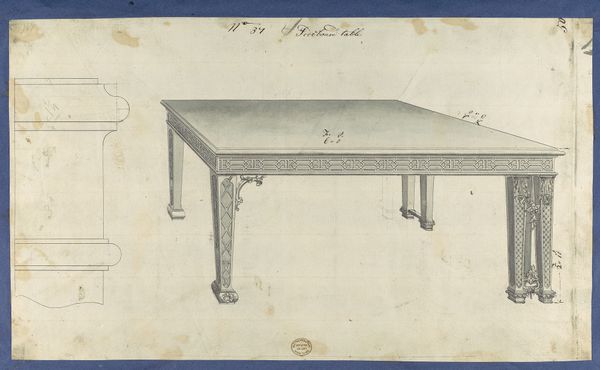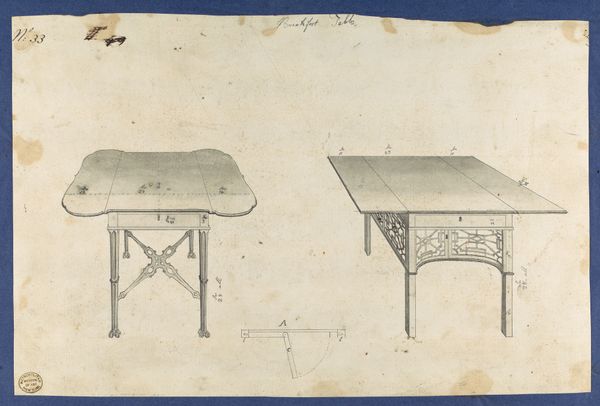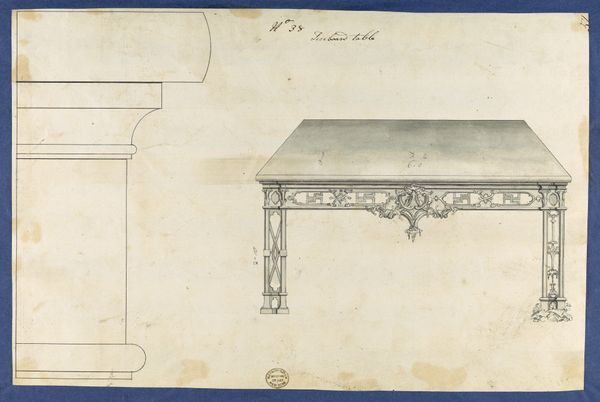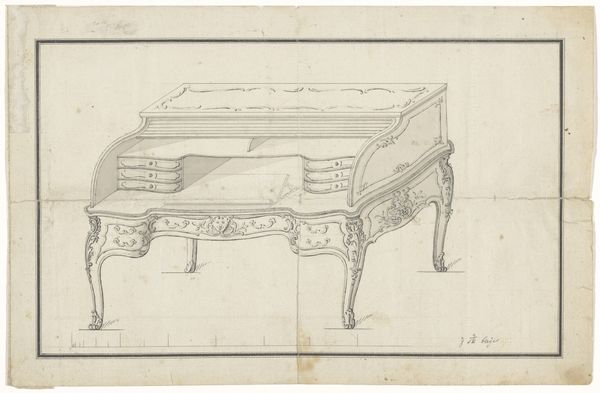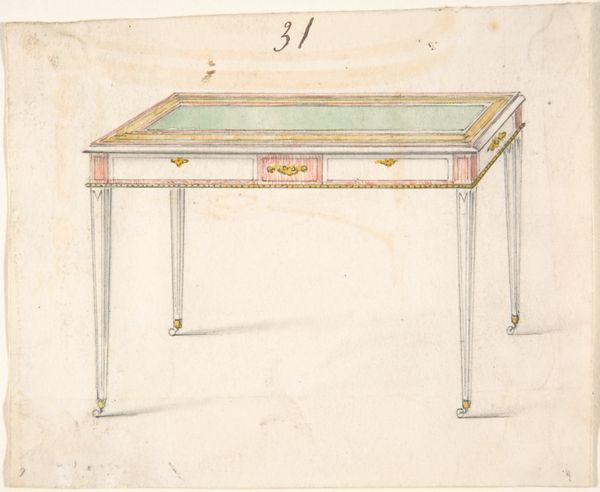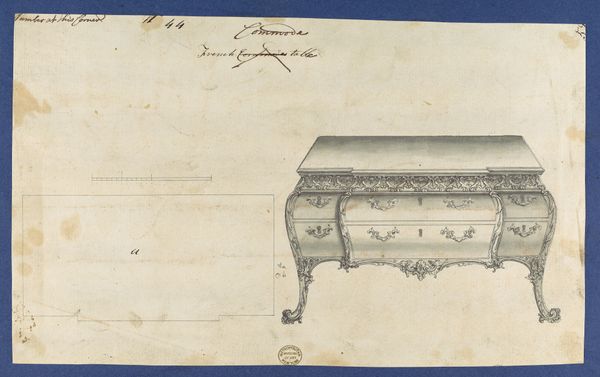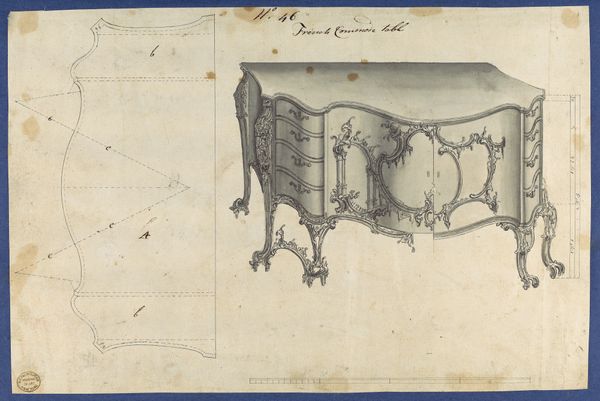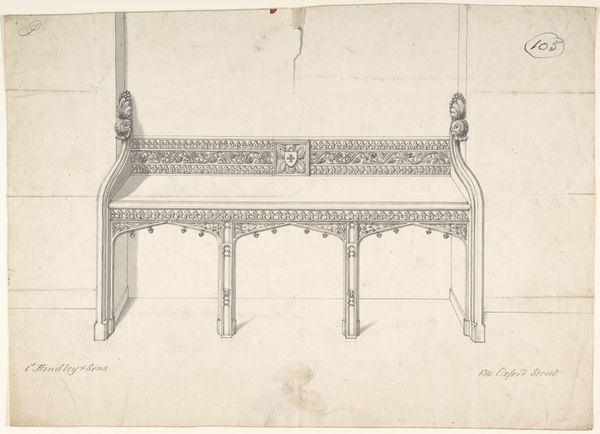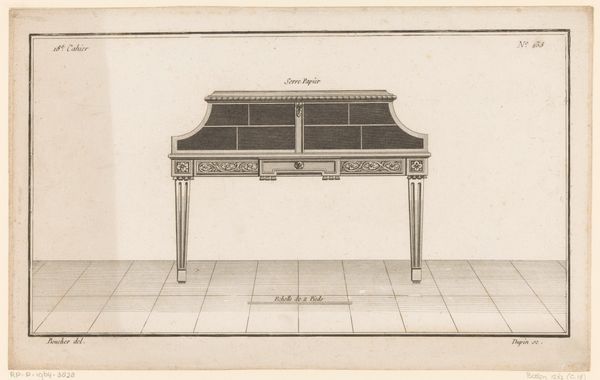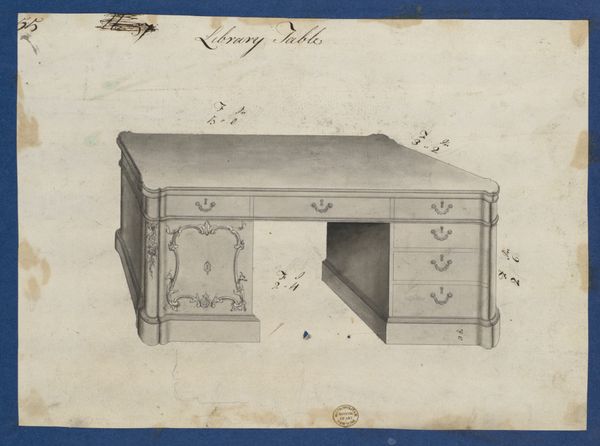
Sideboard Table, from Chippendale Drawings, Vol. II 1753
0:00
0:00
drawing, print, pencil
#
drawing
#
neoclacissism
# print
#
pencil
#
decorative-art
Dimensions: sheet: 8 5/8 x 13 5/8 in. (21.8 x 34.6 cm)
Copyright: Public Domain
Editor: So this is "Sideboard Table, from Chippendale Drawings, Vol. II", made around 1753. It's a drawing, pencil and print, by Thomas Chippendale, housed at the Met. The craftsmanship looks amazing, almost fantastical! How would you interpret this work? Curator: What strikes me is how this design, seemingly about pure aesthetics, reveals the complexities of 18th-century British society and its global reach. Think about it: luxury goods like this table weren't just status symbols; they were products of a colonial system built on exploited labor and resources. Editor: That's a perspective I hadn't considered! It looks so ornamental. Curator: Exactly. The very notion of "decorative art" is tied to power structures. Who gets to decide what's beautiful, and whose labor produces that beauty? Chippendale’s designs, popular among the British elite, reflect their worldview and consumption habits, often at the expense of others. Consider the materials likely used – possibly imported woods acquired through trade routes enforced by imperial power. Editor: So, this drawing isn't just about a table. Curator: Not at all! It's a window into a complex web of social, economic, and political relationships. We must ask: Who benefitted from this aesthetic, and who paid the price? Editor: That really makes you think about how aesthetics can mask some uncomfortable truths. Curator: Precisely. By examining the historical context and the implied narratives, we can better understand how art and design are never truly neutral. This sideboard embodies a set of relationships, it tells a story that’s not readily visible but is certainly embedded. Editor: Thank you. It really changed my way to considering the history and function of "beauty".
Comments
No comments
Be the first to comment and join the conversation on the ultimate creative platform.
